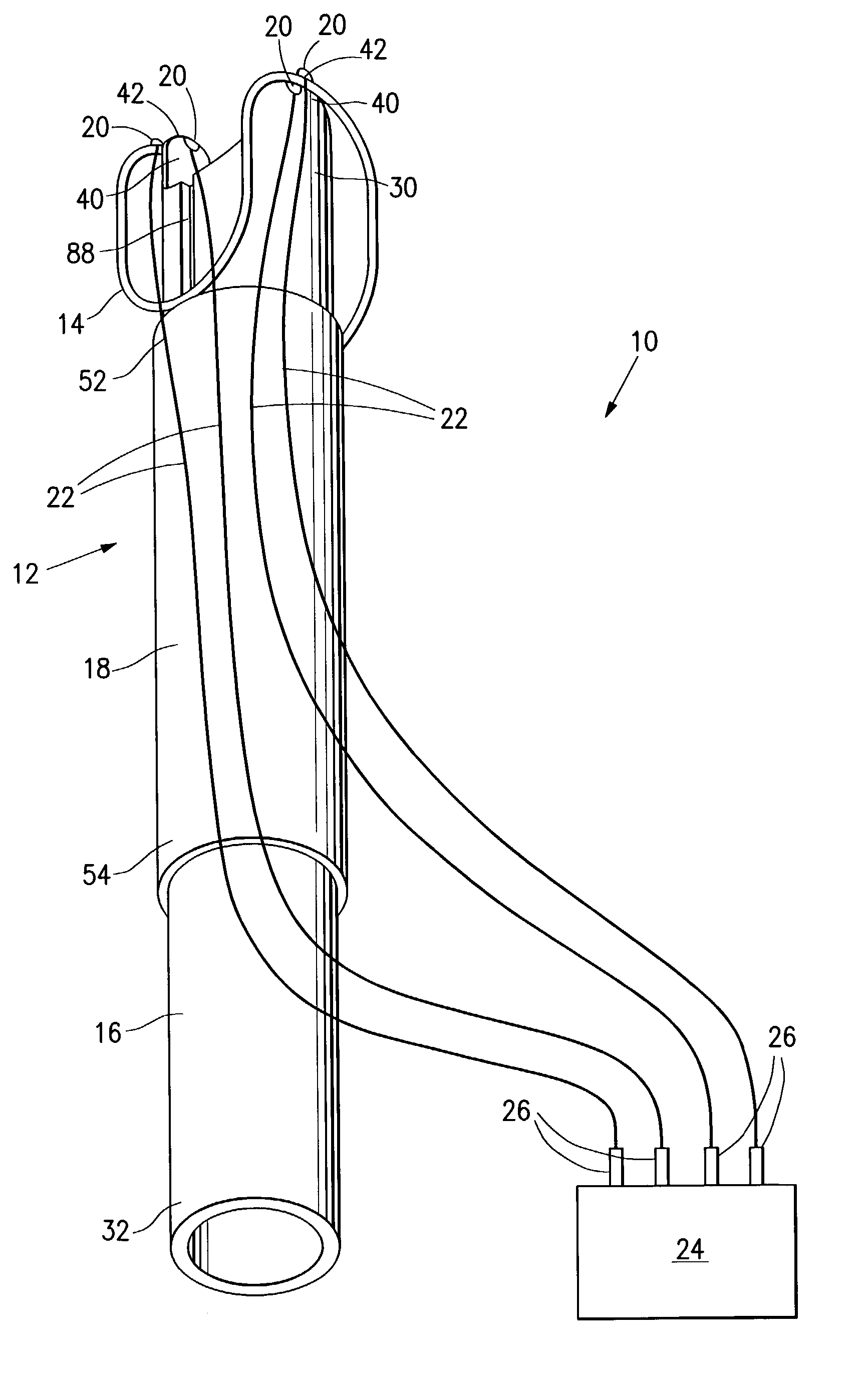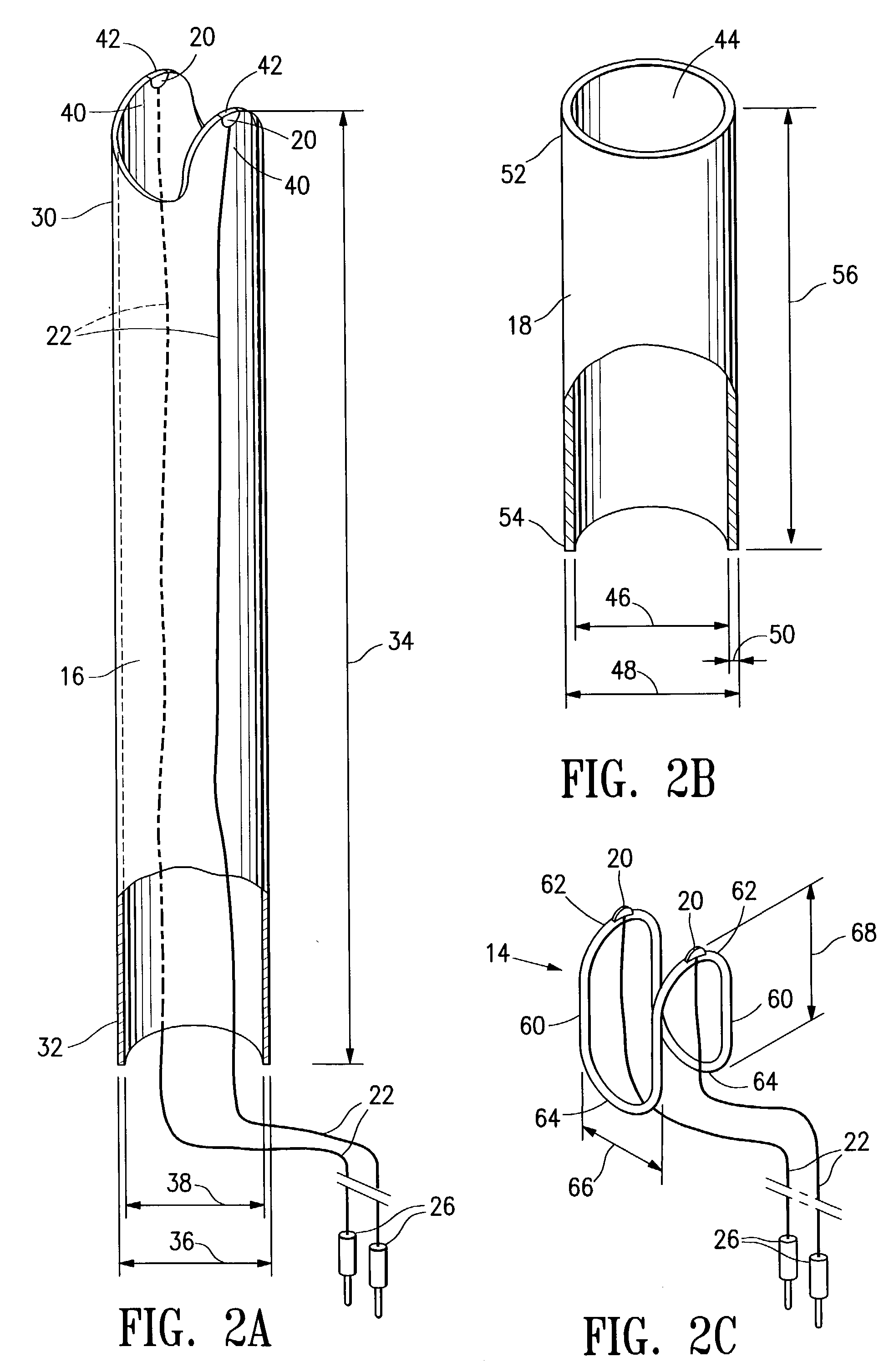Deployable constrictor for uterine artery occlusion
a uterine artery and occlusion technology, applied in the field of uterine artery occlusion devices and methods, can solve the problems of complex procedure, complicated equipment, and hysterectomy, and achieve the effects of simple and easy use, simple removal, and effective treatmen
- Summary
- Abstract
- Description
- Claims
- Application Information
AI Technical Summary
Benefits of technology
Problems solved by technology
Method used
Image
Examples
Embodiment Construction
[0038]A system 10 embodying features of the invention is shown in FIG. 1. The system 10 includes an artery occlusion device 12 that has a tissue constrictor 14 mounted on the distal end of a delivery shaft 16, a deployment member 18, and a pair of location sensors 20 operatively connected to sensor cables 22. In the embodiment shown in FIG. 1, sensor cables 22 may be operatively connected to a sensor controller 24 with cable connectors 26 that are configured to allow ready connection and disconnection of the sensor cables 22 with the sensor controller 24. Where both a constrictor 14 and a delivery shaft 16 have sensors 20, sensor cables 22 may be separate or may be tied, combined, or otherwise joined together along at least a portion of their length. Embodiments of a delivery shaft 16, a deployment member 18, and a constrictor 14 having features of the invention are shown individually in FIGS. 2A, 2B and 2C respectively.
[0039]FIG. 2A is a perspective view of a delivery shaft 16 havi...
PUM
 Login to View More
Login to View More Abstract
Description
Claims
Application Information
 Login to View More
Login to View More - R&D
- Intellectual Property
- Life Sciences
- Materials
- Tech Scout
- Unparalleled Data Quality
- Higher Quality Content
- 60% Fewer Hallucinations
Browse by: Latest US Patents, China's latest patents, Technical Efficacy Thesaurus, Application Domain, Technology Topic, Popular Technical Reports.
© 2025 PatSnap. All rights reserved.Legal|Privacy policy|Modern Slavery Act Transparency Statement|Sitemap|About US| Contact US: help@patsnap.com



